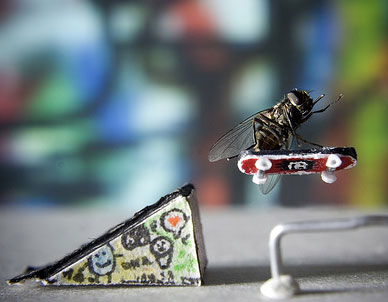Close-up photography is great in a way that it really brings out the detail of your subject and makes the viewer more involved with the picture. Here are some Photography Fundamentals you can find helpful in starting your macro photography.
1. Choose the Best Lens Option: the focal length of macro lenses ranges from 50mm to 200mm. Although many zoom lenses boast a macro setting, these are usually less than half life-size magnification – true macro, however, begins with 1:1 and nothing less. A 50mm to 60mm lens is suitable for general macro work but if you want greater subject-to-lens distance, a 100mm lens will give you this at a much higher price. For creatures like butterflies and dragonflies, lens-to-subject distance becomes even more important so focal length needs to be greater. The 150-200mm range is the most expensive, but you will appreciate the extra power when stalking flighty subjects.
2. Make a Standard Zoom Focus Closer by Adding Tubes: Extension tubes fit between the rear mount of the lens and the camera body to make the lens focus closer and therefore produce a much bigger image of a small subject. This is a much cheaper alternative than buying a macro lens but tubes are fiddlier to use in the field. Also, with an extension tube fitted you lose the infinity end of your focusing range. Adding more tubes makes it increasingly more limited.
3. Add a Dioptre to Make a Lens Focus Closer: Close-up filters are single-element lenses that look like magnifying glasses. These filters screw into the front element thread and can provide an inexpensive alternative to splashing out on a macro lens. They come in a variety of strengths that are measured in dioptres often available in sets of +1, +2 or +4 dioptre magnification.
4. Use Apertures to Control Depth of Field: To get the most out of available depth-of-field, select a small aperture like f/16 or even f/22. At half-life size the depth-of-field you can achieve at f/22 will be only at best around 15mm. You may also wish to go to the other extreme and show as little sharpness as possible by opening up to full aperture like f/2.8 or f/4. One advantage of setting your aperture to f/2.8 or f/4 is that any out-of-focus highlights will show as circle-like bubbles that can look very artistic and attractive.
5. Blend Flash with Ambient: With more static subjects it can be fun to add a blip of flash just to liven up an image. For example, if you take a shot of a flower exposed to natural light, try shooting it with a given blip of off-camera fill-in flash and adjust the shutter speed one stop higher in order to darken the background and give more emphasis on the flower.
Take advantage of these 5 tips in your Macro Photography and for sure will get the great and perfect macro shot you desire. But don’t just stop here, you should research more and make use of your research-based-knowledge to enhance your macro photography skill.



0 comments:
Post a Comment